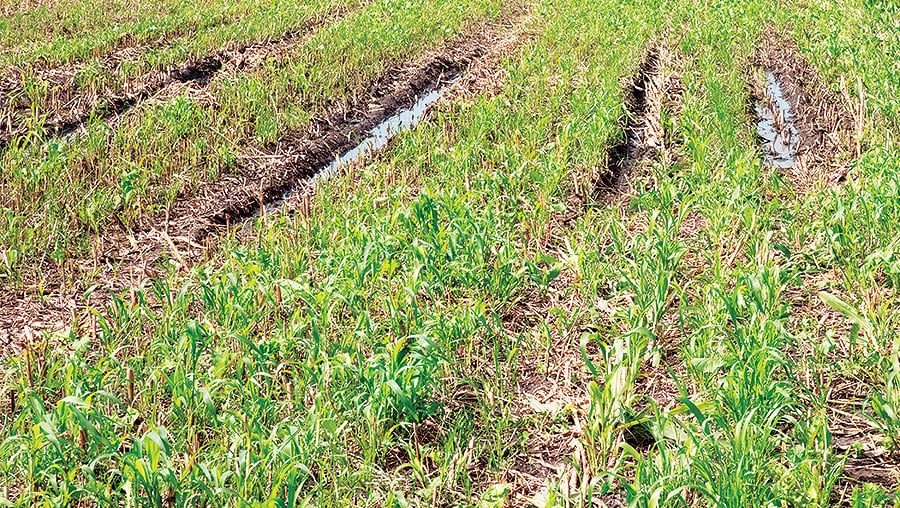No-Till Farmer
Get full access NOW to the most comprehensive, powerful and easy-to-use online resource for no-tillage practices. Just one good idea will pay for your subscription hundreds of times over.

According to the National Oceanic and Atmospheric Administration’s (NOAA) National Centers for Environmental Information, the 12 months between July 2018 and June 2019 saw record precipitation in the U.S., with an average of 37.86 inches, which is 7.9 inches above normal. With such brutal conditions to contend with, soil compaction has been a concern for many farmers this year.
While there are other causes of compaction, most of it comes from heavy machinery driving over fields when they are saturated. Studies have shown that compaction can reduce crop yields by 10-20%, depending upon a variety of factors, such as soil type, soil moisture, whether the machinery sports tracks or tires, the type of tire, tire inflation pressure and more.
No-Till Farmer editors asked several industry experts to share how producers can prevent, treat and survive compaction-related issues in 2019 and ensure the problems won’t linger into 2020.
No-till alone helps reduce compaction, simply by virtue of cutting out passes over the field. Where a conventionally-tilled field usually sees 7 or more passes over the course of a growing season, a no-till field can get by with as few as 2 or 3.